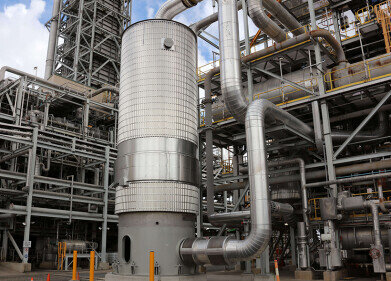Air Clean Up
Is Ozone Pollution Still Rising?
Sep 27 2020
Ozone pollution has gradually increased over the last two decades across the Northern Hemisphere, according to a new study from the University of Colorado Boulder. The scientists behind the research observed a 5% deterioration in ozone pollution for each decade of study, while more northerly regions of the troposphere, such as much of Europe, the United States and Canada, were more susceptible to the pollution.
The novel research used data collected by commercial aeroplanes to provide a more reliable picture of ozone pollution, the first study of its kind to do so. Its findings are concerning given the detrimental impacts that ozone has on human, animal and plant health, as well as its contributions towards global warming and climate change.
Ozone uncertainty
Quantifying the exact levels of ozone in our atmosphere has been a difficult proposition. Although the pollutant is generally formed from nitrogen oxides (NOx), measuring and monitoring NOx gas emissions is an unreliable method of estimating ozone concentrations, since there are several other factors in play during its formation.
The most tried and trusted technique to this point has been to rely on satellite measurements of ozone to gain a global overview of the situation. However, a recent project entitled the Tropospheric Ozone Assessment Report revealed that different satellites could not agree on the amounts of ozone in the atmosphere, meaning scientists could not say with confidence about whether the pollutant was in the ascendancy over the last 10 or 20 years or not.
Filling in the gaps
With that in mind, the team from the Cooperative Institute for Research in Environmental Sciences (CIRES) at University of Colorado Boulder took it upon themselves to turn to commercial aircraft for the first time. Data on ozone levels has been gathered by flights since 1994, thanks to the European initiative In-Service Aircraft for the Global Observing System (IAGOS).
While this data generally only provides localised readings of ozone levels, the team compiled information from enough different regions to give themselves a cohesive picture of air quality in the Northern Hemisphere. The findings revealed that ozone levels were “very low” between 1994 and 2004, but skyrocketed to “very high” between 2011 and 2016, rising an average of 5% per decade.
A manmade increase
While ozone is a naturally forming gas, its concentrations have increased dramatically in recent years due to an onslaught on anthropogenic activity. In particular, NOx pollution over megacities like New Delhi, London and Paris has spiralled out of control in recent years. Once airborne, NOx can react with other contaminants and particles in the atmosphere to create ozone.
That is concerning because ozone has been linked to a wide variety of health complaints and is thought to be a contributing factor to the millions of premature deaths that occur worldwide each year due to prolonged exposure to poor air quality. At the same time, ozone is also a potent greenhouse gas, making it partially responsible for both global warming and climate change.
Events
May 05 2024 Seville, Spain
May 13 2024 Munich, Germany
May 23 2024 Beijing, China
May 23 2024 Beijing, China
Jun 10 2024 Algiers, Algeria














